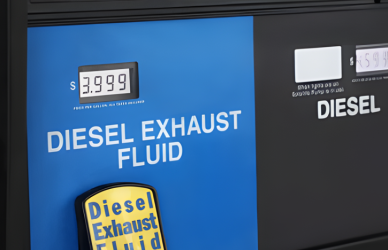Momentum behind the DRIVE Act, a legislative proposal aimed at preventing the Federal Motor Carrier Safety Administration’s (FMCSA) ability to enforce speed limiters on heavy-duty trucks, is steadily growing.
In the U.S. House of Representatives, the number of co-sponsors for the bill has now reached 30, with recent endorsements from Representatives Zachary Nunn of Iowa, Chuck Edwards of North Carolina, and Doug LaMalfa of California.
The DRIVE Act, or HR3039, seeks to prohibit the FMCSA from issuing any rules or regulations that mandate the installation of speed limiters on commercial motor vehicles.
The Owner-Operator Independent Drivers Association (OOIDA), a representative and advocate for small businesses in the industry, stands firmly behind the DRIVE Act. They are urging its more than 150,000 members to mobilize their lawmakers to join as co-sponsors. OOIDA argues that speed limiters can create dangerous speed disparities and holds firm that setting speed limits should be up to the digression of individual states.
“The physics are straightforward – limiting trucks to speeds below the flow of traffic increases interactions between vehicles and leads to more crashes,” said Todd Spencer, OOIDA president.
In 2022, FMCSA initiated an advance notice of supplemental proposed rulemaking that suggested the possibility that speed limiters be installed on any commercial motor vehicle with a gross weight of 26,001 pounds or more. The specific top speed had not been determined, although earlier suggestions ranged from 60 to 68 mph. In September 2023, FMCSA hinted at proposing a top speed of 68 mph; however, it later stated that a final decision was still pending.
Whatever the ultimate speed limit, many truck drivers have voiced strong opposition to any mandate regarding speed limiters. Of the over 15,000 comments submitted, many were from truckers who objected to the idea. They raised concerns about the risks associated with varying speeds, mainly when speed limits in certain parts of the country reach as high as 85 mph.
“I oppose the speed limiter mandate,” said Thad Thurlow, a professional truck driver who responded in a comment to FMCSA. “Speed differentials create unsafe conditions. Some states have already come to that conclusion and abolished their speed differentials. Limiting all trucks to the same speed will create more congestion as trucks pass each other and cars have to move around them. Congestion leads to more frustration and drivers making riskier decisions to get through traffic.”
Representative Josh Brecheen of Oklahoma formally introduced the DRIVE Act in the House on May 25. In a May interview with Land Line Now, Brecheen pointed out the potential extreme speed differentials that could arise from speed limiters, describing the potential mandate as an impending accident.
“You have states with 85 mph speed limits, and then you have someone texting and driving and not paying attention and then rear ends (the truck),” Brecheen said. “Let’s say that tractor-trailer has an excavator on the back … there’s no opportunity (to correct) going 30 mph less when that person gets rear-ended … That’s the kind of stuff we’re talking about here – a 30 mph difference, because one is limited by federal law and the other is traveling 30 mph faster because of state law.”
Source: Land Line











